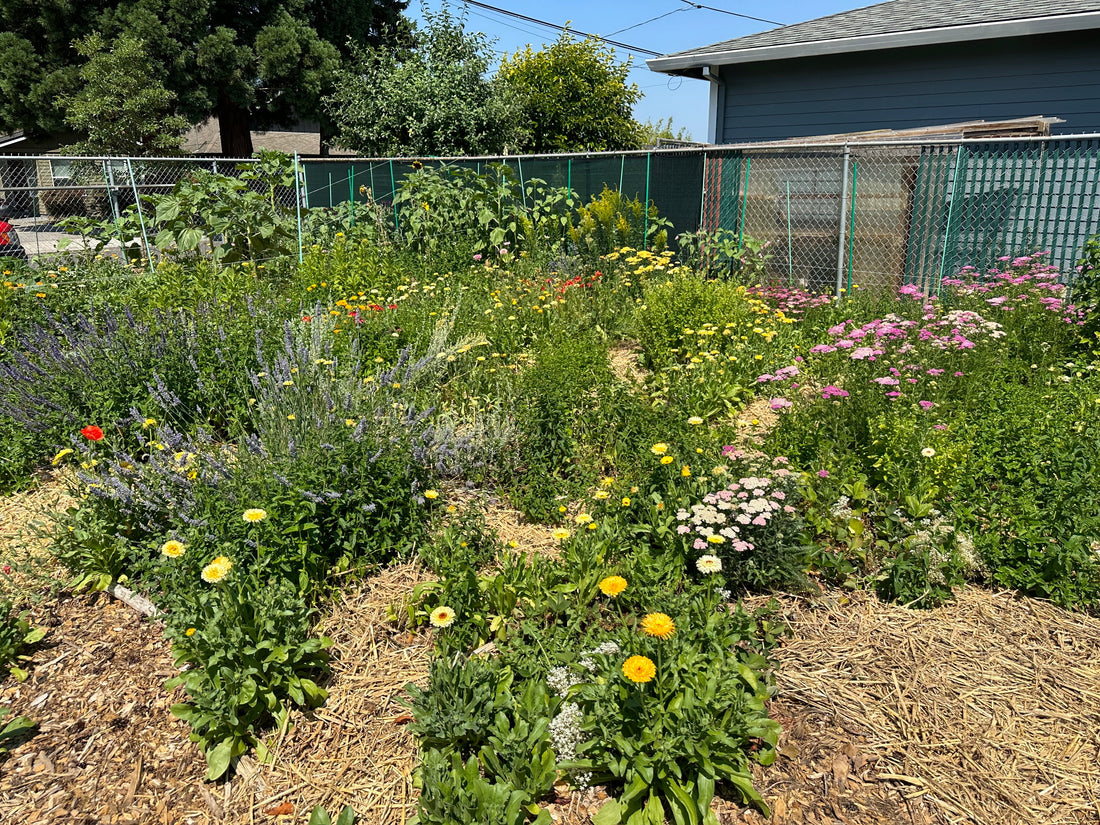We transformed this 1000 sqft, life-less, side yard into a eco scape boasting 31 varieties of native plants, edibles, cut flowers, and medicinal perennials. We started in Nov 2021, by flipping the grass where beds would be, then adding compost, and then deep mulching the entire area. Planting started in April 2022. [Plant List Below]



November 2021 April 2022


June 2022 August 2022
I was trying to fit as many layers of flowers, food, and medicine in each of the new 7 rows. This looks calendula, yarrow, squash, sunflowers, zinnias, flowering onions, orpine, golden raspberries, cosmos, and fava beans strategically planted alongside the dahlias.


Cuckoo Bee on Elecampane Male Long-horned Bees on poppy heads
Most exciting to me is the new bee diversity present. I have been using this site to study bee diversity and abundance through the OSU Master Melitology program for which Ive been enrolled since 2023.


Honeys and bumbles in artichoke flower. Carpenter bee on mint flowers




July 2023
Plant List: Anise Hyssop, Artichoke, Artemisia, Blueberry, Calendula, Chives, Cosmos, Dahlia, Echinacea, Elecampane, Fava Beans, Golden Raspberry, Goldenrod, Huckleberry, Lemon Balm, Lemon Verbena, Lavender, Mint, Monkey Flower, Nasturtium, Oregano, Orpine, Oregon Bee Friend, Potato, Rosemary, Russian Sage, Showy Milkweed, Strawberry, Sunflower, Yarrow, Zinnia.

